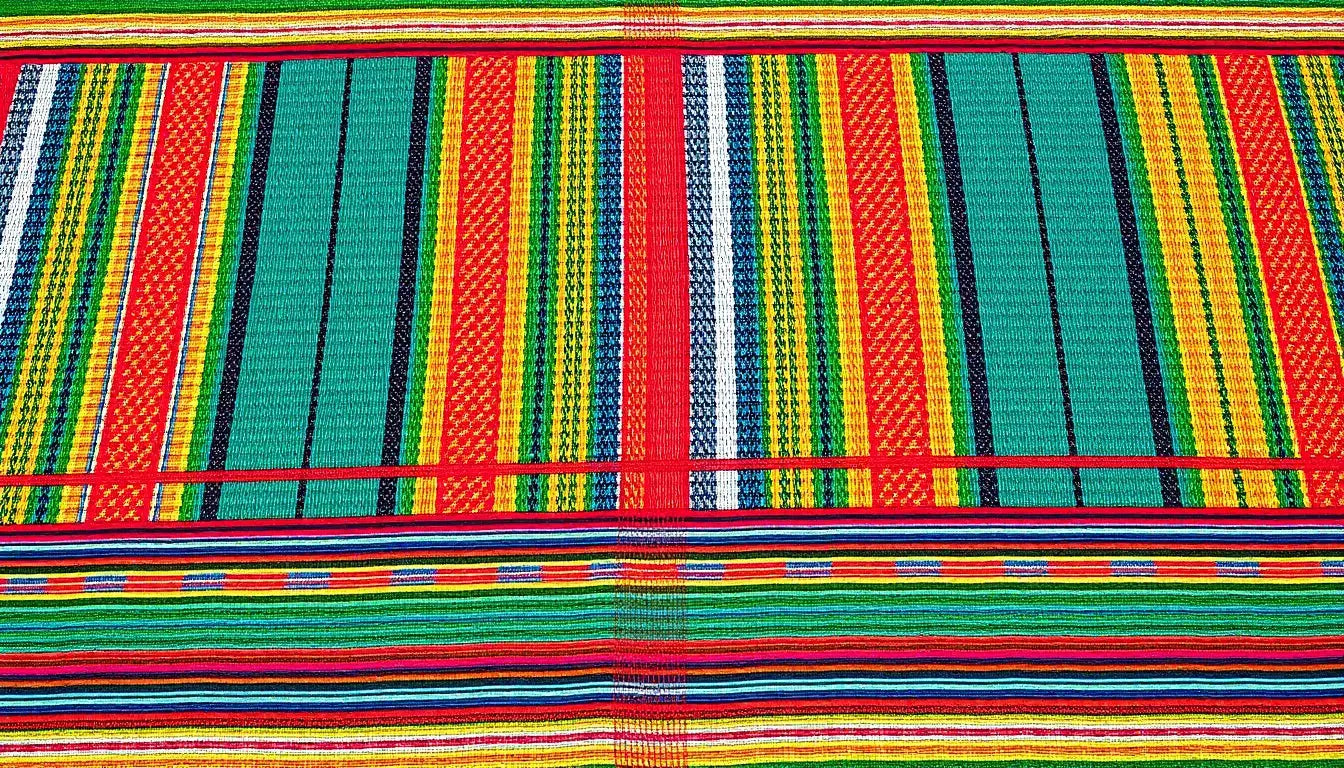
Community-Owned Fabric: How Co‑op Textile Workshops and On‑Demand Microfactories Preserve Jamaican Craft and Scale Dancehall Streetwear Globally
Introduction
Dancehall streetwear carries the cadence of Kingston streets, the boldness of sound system culture, and visual codes that speak to identity, resilience, and invention. As international appetite for Dancehall aesthetics increases, there is a unique opportunity to scale this clothing globally while protecting the makers, stories, and techniques that make it authentic. Community-owned fabric models that pair cooperative textile workshops with on-demand microfactories offer a viable, ethical, and commercially robust path forward.
The cultural and historical context of Dancehall fashion
Dancehall emerged from Jamaica in the late 1970s and evolved dramatically through the 1980s and 1990s. Clothing became an essential way to communicate status, creativity, and affiliation. From customized tracksuits and vibrant prints to hand-embellished stage wear and DIY couture, Dancehall fashion reflects improvisation and local ingenuity.
Understanding the fashion means understanding the social networks that produce it: sound systems, community tailors, small print shops, and market stalls. These networks are often informal, intergenerational, and rooted in specific neighbourhoods. Preserving Dancehall clothing therefore requires more than downstream brand control; it requires local ownership of production and cultural authorship.
The problem: loss of craft, cultural appropriation, and economic leakage
As demand grows, three interlinked risks appear:
- Cultural appropriation: International brands may borrow motifs and aesthetics without crediting or compensating originators, diluting meaning and excluding creators.
- Economic leakage: When design or finishing moves offshore, the majority of value leaves the local economy, reducing job growth and investment in communities.
- Loss of craft: Traditional techniques risk fading if not documented, passed on, or made economically viable for younger generations.
Community-owned fabric infrastructure can mitigate these risks by anchoring production, governance, and profit in Jamaica.
What community-owned fabric means
Community-owned fabric is a broad concept describing vertically integrated, locally governed textile systems that combine co-operative ownership with digital, on-demand production capabilities. The model centers on three pillars:
- Ownership: Workers, artisans, and community stakeholders hold equity or decision-making power in production entities.
- Craft preservation: Deliberate programs capture and sustain traditional techniques through apprenticeships and documentation.
- Agile production: Microfactories use digital tools to produce high-quality, small-batch garments linked to e-commerce and wholesale pipelines.
Co‑op textile workshops: governance, culture, and craft
Cooperative textile workshops are worker- or community-owned enterprises where governance is democratic, profits are shared or reinvested, and social goals are embedded in business decisions. Key features:
- Democratic governance: One-member, one-vote policies for major decisions help ensure the enterprise reflects community priorities.
- Profit reinvestment: Earnings can fund training, community projects, or capital expansion rather than being extracted by external shareholders.
- Cultural programming: Co-ops can host storytelling events, archive motif origins, and produce limited collections tied to festivals and cultural calendars.
- Worker protection: Co-ops provide safer wages, predictable hours, and pathways for career development in textiles and related digital skills.
On‑demand microfactories: agility, tech, and quality
Microfactories are small, highly automated production units that convert digital orders into finished garments quickly and at low minimums. They bridge artisanal craft and modern production demands. Core components include:
- Digital textile printers for vibrant, small-batch prints
- Automatic and semi-automatic cutting tables for pattern accuracy
- Computer-aided embroidery and finishing stations
- Order and production management systems that connect e-commerce platforms to manufacturing schedules
Combined with co-op oversight, microfactories let communities offer traceable, authentic products to global customers without large inventory commitments or overproduction.
How the combined model preserves craft while enabling scale
The hybrid approach protects authenticity through several mechanisms:
- Design control stays local: Motifs, color stories, and narratives are authored by community designers and documented in brand assets and provenance records.
- Apprenticeship ecosystems: Co-ops formalize training so techniques like hand-embellishment, traditional dyeing, and custom tailoring persist.
- Quality and provenance verification: Microfactories coupled with traceability tools provide verifiable proof that a garment originated in a specific community workshop.
- Iterative innovation: Designers can experiment with hybrids combining traditional techniques and modern materials in short runs, with data informing what scales.
Technical deep dive: processes, tools, and studio layout
For communities building these systems, understanding the technical mix is vital. A practical microfactory/co-op setup includes zones and equipment:
- Design and digitization: Workstations for pattern making, digitizing of embroidery files, and color management systems for consistent print results.
- Printing and dyeing: Digital textile printers for reactive dye or pigment printing; small-scale low-water or waterless dyeing setups for sustainable color processing.
- Cutting and assembly: Automated cutters for precision and manual cutting stations for bespoke pieces; sewing machines optimized for diverse fabric weights.
- Embellishment and finishing: Hand-embroidery desks, heat-press stations, and inspection tables.
- Fulfillment and QC: Packing stations, quality control checklists, and photo stations for product imagery based on storytelling templates.
Selecting equipment should be guided by production targets, available capital, and skills. Start with a few versatile machines and add automation as demand grows.
Unit economics and pricing strategy
To ensure sustainability, co-ops must balance craft premiums with competitive pricing for global markets. Example framework:
- Cost components: direct materials, labor, machine amortization, overhead, packaging, shipping, and platform fees.
- Minimum viable price: calculate break-even per unit at different batch sizes to see how on-demand pricing compares to bulk production.
- Premium tiers: offer standard basics at accessible prices, limited-edition runs with higher craftsmanship at premium pricing, and bespoke commissions at top-tier rates.
Illustrative example: a limited-run hand-embellished denim jacket. Material cost 25 USD, labour 80 USD, overhead and amortization 20 USD, shipping and fees 15 USD. Retail price could be set at 250–450 USD depending on brand positioning and storytelling, leaving margin for the co-op and reinvestment.
Funding, finance, and capital strategies
Access to capital is one of the primary barriers. Effective blended financing mixes include:
- Grants: Cultural heritage, arts, and sustainable development grants can fund documentation and initial equipment purchases.
- Impact investors: Investors focused on community development and sustainable fashion may accept longer timelines for social returns.
- Crowdfunding: Campaigns that tell the artisans' stories can raise capital while validating market demand.
- Community shares and membership fees: Members buy shares in the co-op to provide seed capital and align incentives.
- Debt with flexible terms: Community-friendly microfinance or development finance institutions can underwrite equipment loans.
Structuring capital as a mix of non-recourse grants and patient equity preserves community control and reduces pressure to scale unsustainably.
Legal frameworks, cultural IP, and brand protection
Protecting cultural assets requires a layered legal approach:
- Trademarks: Register co-op brands and collection names to prevent unauthorized commercial exploitation.
- Geographical indicators (GI): Where appropriate, pursue GI-like protections for signature techniques or motifs tied to a place.
- Licensing agreements: Use clear contracts for collaborations with external designers or brands to ensure royalties and credit flow back to the co-op.
- Cultural rights protocols: Adopt community-based consent processes for the use of motifs and narratives.
Legal assistance can be obtained through pro bono partnerships with law schools, cultural NGOs, or impact law firms.
Supply chain, logistics, and global fulfillment
Microfactories reduce inventory but still require robust fulfillment strategies:
- Regional fulfillment hubs: Partner with regional logistic providers to minimize shipping times and customs complexity for international orders.
- Distributed nodes: As volume grows, replicate microfactories in key markets or partner with ethical manufacturers for final assembly while keeping design and key craft steps local.
- Returns and repairs: Offer clear repair and return policies with local repair programs to reduce waste and retain customer lifetime value.
Marketing, storytelling, and SEO tactics for global reach
To rank highly on search engines and build a global audience, combine strong SEO fundamentals with cultural storytelling:
- Keyword strategy: Target keywords combining product intent and cultural context such as Dancehall streetwear, Jamaican artisan clothing, hand-embellished streetwear, and Jamaican co-op textiles.
- Product pages as stories: Each product page should include artisan biographies, process descriptions, high-quality imagery, and provenance badges to increase time on page and E‑A‑T signals.
- Content marketing: Publish long-form content on craft techniques, festival-driven capsule drops, and behind-the-scenes videos to attract backlinks and social shares.
- Structured data: Use schema to mark up product, review, and organization data so search engines display rich results.
- Partnership marketing: Collaborate with cultural institutions, Diaspora networks, and music labels to reach aligned audiences.
Digital tools and platforms to connect production with demand
Practical software stack examples for small communities:
- Order management: platforms that integrate Shopify or WooCommerce orders with production schedules
- ERP-lite: lightweight systems for inventory, BOMs, and costing
- Production control: digital kanban boards and machine monitoring for throughput analysis
- Traceability: QR code generators and simple blockchain provenance solutions to store artisan metadata and production history
Sustainability and circular design strategies
Sustainable practice is both ethical and marketable. Practical strategies include:
- Material sourcing: prioritize locally grown cotton where viable, certified organic or recycled fibers, and low-impact synthetics when needed.
- Zero-waste patterning: adapt pattern layouts to minimize offcuts and develop upcycling programs for production remnants.
- Repair and take-back: offer repair credits and take-back incentives to close material loops.
- Renewable energy: adopt solar or hybrid setups for microfactories to reduce operational emissions.
Social impact: beyond jobs to community resilience
Community-owned fabric has compounding social benefits:
- Long-term employment: stable work reduces migration pressures and strengthens local economies.
- Women's empowerment: textile co-ops often provide meaningful income to women and create leadership pathways.
- Cultural continuity: archives and mentorship sustain intangible heritage across generations.
- Community investment: profits can fund local education, health, and infrastructure projects.
Detailed case studies and hypothetical pilots
Real-world pilots illustrate feasibility. Below are three hypothetical yet realistic use cases designed to be replicable.
-
Neighbourhood Co‑op and Festival Capsule
Context: A Kingston neighbourhood co-op documents traditional tie-dye and hand-sewn embellishment methods. They run a pilot of 200 festival jackets combining hand-dye and digital-printed linings. Microfactory prints linings on demand and co-op members add handwork locally. Jackets sell through D2C drops timed with Reggae/Dancehall festival season, generating funds to expand equipment.
-
Women’s Embellishment Collective
Context: A women-led co-op focuses on hand-embellished stagewear for performers. They use microfactory services for base garments but retain embellishment locally. By licensing designs to international artists and selling limited runs, the co-op scales revenue while preserving craft.
-
Designer Collaboration Program
Context: The co-op partners with an overseas streetwear brand on a collaborative capsule where royalties fund co-op training. The collaboration is framed as co-creation, uses licensing agreements, and includes on-product traceability so buyers can scan to meet the artisan who made their garment.
Expanded roadmap with timelines and milestones
A realistic phased plan for an 18–36 month build-out:
-
Months 0–3: Community assessment and governance
- Map skills, spaces, and market opportunities
- Form cooperative structure and register entity
- Identify lead artisans and governance council
-
Months 3–9: Pilot microfactory and documentation
- Purchase key equipment for printing and finishing
- Run pilot product line and test fulfillment workflows
- Create digital archives and training materials for core techniques
-
Months 9–18: Market entry and revenue validation
- Launch D2C platform and first limited-edition drops
- Establish partnerships with regional logistics providers
- Measure unit economics and adjust pricing
-
Months 18–36: Scale and replication
- Replicate microfactory nodes in diaspora hubs or strategic markets
- Secure long-term financing for expansion and training
- Introduce certification or provenance badges for all products
Risks and mitigations
Every model has vulnerabilities. Anticipate and mitigate these risks:
- Market volatility: Diversify channels—D2C, wholesale, collaborations—to reduce dependency on any single revenue stream.
- Skill drain: Offer competitive compensation and clear career development to retain artisans.
- Supply disruptions: Develop multiple fiber sources and maintain a small buffer stock for critical materials.
- Reputational risk: Maintain clear community consent processes and transparent accounting to preserve trust.
KPIs and measurement framework
Rigorous measurement ties mission to outcomes. Track metrics across economic, cultural, and environmental dimensions:
- Economic: percent of retail revenue retained locally, gross margin by product line, number of paying customers
- Social: artisans employed, apprentices graduated, gender parity in leadership
- Cultural: number of documented techniques, community events held, use of provenance scans
- Environmental: reduction in overproduction, percentage of recycled/organic materials, energy use per garment
Practical resources, partners, and funding sources
Communities should pursue a mix of technical partners and funding sources. Potential resources include:
- Local export and trade agencies for market access support
- International cultural foundations and arts councils for grants
- Impact investors and boutique funds focused on sustainable fashion
- Technical partners for equipment leasing and training from textile machinery vendors
- University partnerships for research, incubation, and pro bono legal help
How to build partnerships without surrendering control
Strategic collaborations accelerate scale but require guardrails:
- Use limited licensing rather than equity buyouts for brand collaborations
- Insist on revenue-sharing clauses and co-creation credits in all contracts
- Build transparent reporting requirements so partners can be audited on ethical commitments
- Create a cultural advisory board to review partnership proposals and protect intangible heritage
Measuring cultural authenticity in a commercialized world
Authenticity is not static. It can be sustained through practices rather than purity tests. Recommendations:
- Define core elements of authenticity with community elders and current makers
- Document permissible adaptations and set clear expectations for collaborators
- Use provenance tools to let consumers choose the depth of authenticity they want to support
Examples of storytelling formats that convert
Translate craft into commerce with these content forms:
- Artisan profiles with portrait photography and short audio clips about craft stories
- Process videos showing dye-to-garment journeys in 60–180 second formats for social platforms
- Interactive product pages with scan-to-learn provenance layers and timeline stories
- Long-form essays or lookbooks tied to cultural events that earn backlinks and press coverage
Scaling ethically into global markets
As Dancehall streetwear reaches broader audiences, ethical scaling means:
- Protecting authorship and ensuring royalties flow to makers
- Avoiding dilution by maintaining limited runs and provenance verification
- Investing in brand education so international customers understand the social and cultural value embedded in each piece
Conclusion: design systems that respect origin and reward creators
Community-owned fabric that blends cooperative textile workshops with on-demand microfactories provides a powerful route to scale Dancehall streetwear globally while preserving craft and community value. It aligns economic incentives with cultural stewardship, offers environmental benefits through on-demand production and circular practices, and creates meaningful social uplift through jobs and training. The model is not without challenges, but with deliberate governance, blended financing, and transparent storytelling, Jamaican communities can both shape and profit from the global stage.
Call to action: starting small, thinking big
If you are an artisan, designer, cultural leader, or impact investor interested in this path, here are practical next steps:
- Convene a local meeting to map skills, spaces, and priorities
- Run a 90-day pilot to test a microfactory workflow and product drop
- Document craft techniques and create simple digital profiles for artisans
- Seek blended financing with clear community control provisions
- Build a simple provenance system using QR codes to connect buyers with makers
The global appetite for authentic Dancehall streetwear is real. By centering community ownership, preserving craft, and using agile production technologies, Jamaican makers can scale their impact and ensure that the culture at the heart of the clothing remains visible, valued, and viable for generations to come.


